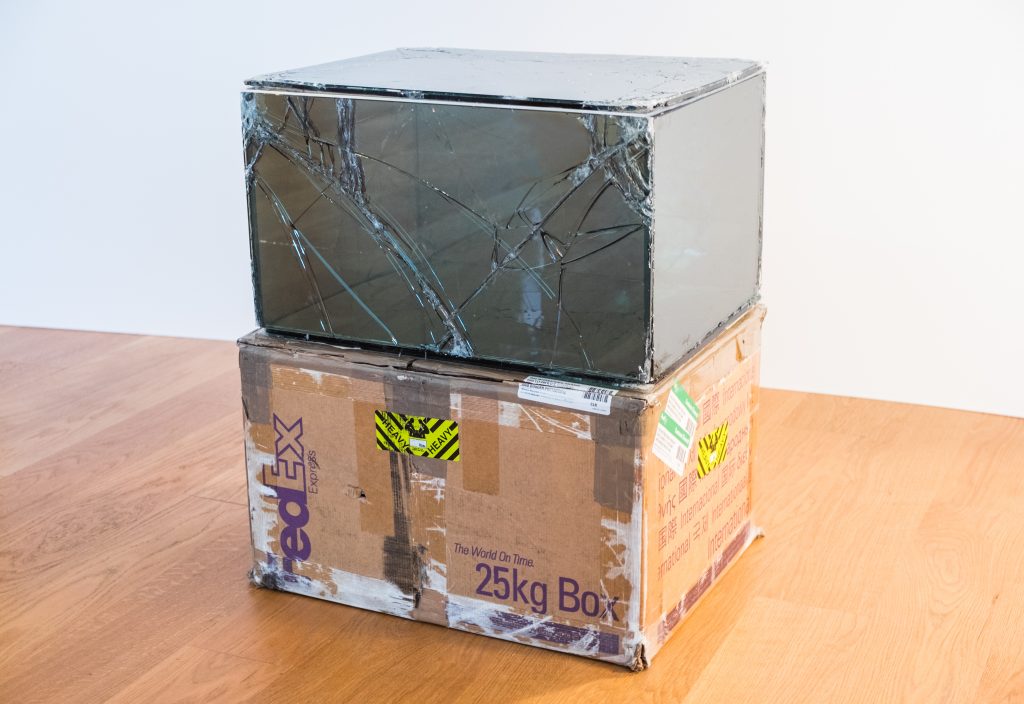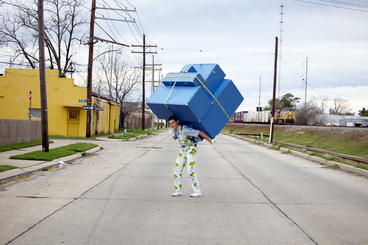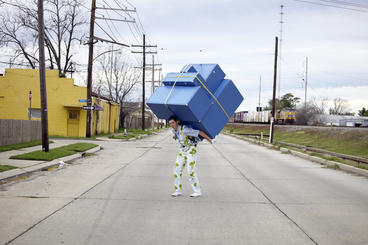This spring WAM is excited to present Baggage Claims, an exhibit that examines the significance of the things we carry with us through the lens of luggage. Suitcases and crates symbolize the movement of people and belongings across the world, and they evoke the political and economic concerns that incite and result from this travel. Baggage can also take on a psychological meaning, referring to memories and emotions caused by past events that linger into the present. Baggage Claims features eighteen artists who primarily use sculpture to express what the concept of baggage means to them — from transporters of personal belongings to reminders of deeply personal life events. In order to address these disparate meanings, the artists refer to baggage as both a physical object and an abstract idea.
Every work in the show involves luggage, either carried by a person in a video or installed on the floor of the gallery. Some pieces incorporate private possessions to tell a personal story while other installations were built from scratch, posing conceptual questions about the meaning of baggage. In an exhibit focusing on mobility and travel, it is fitting that the artists throughout the world, including East Asia, Europe, the Middle East, and the United States are represented. Baggage Claims comes to WAM from the Orlando Museum of Art, where it was curated by Ginger Gregg Duggan and Judith Hoos Fox, who form the independent partnership c2–curatorsquared. The show will be on view from February 2 through May 12.
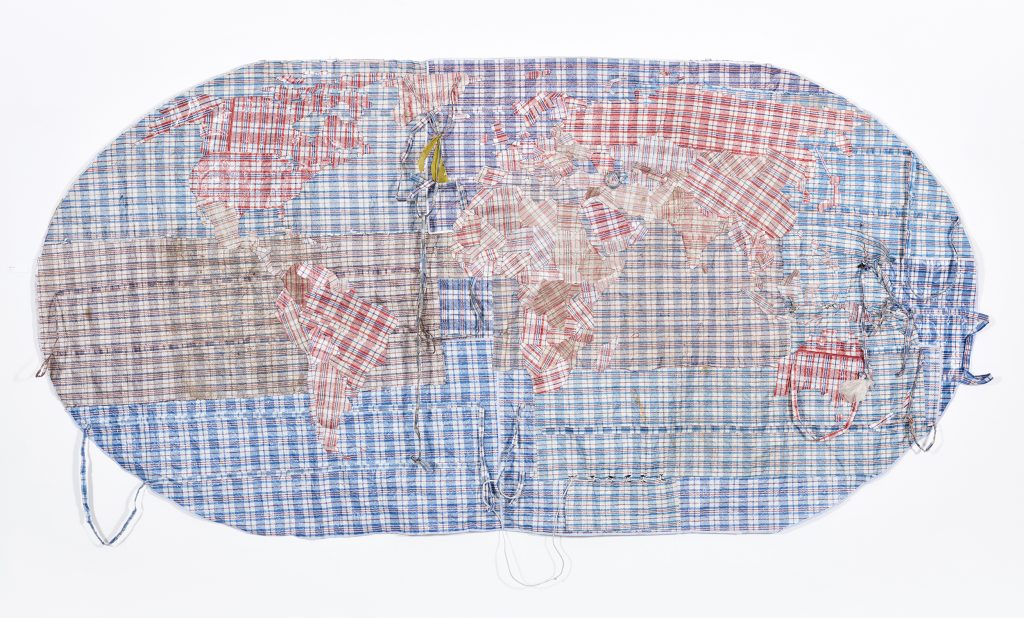
Baggage is often intensely personal. It consists of the things we choose to bring with us as we travel and move through our lives. American artist Joel Ross gives physical presence to his emotional baggage in the installation Room 28. Returning to a rural Texas motel room that was the site of a bad breakup, Ross dismantled the entire contents of the room and packaged it into forty vintage suitcases. He broke down furniture and stripped the walls bare, leaving the motel with his suitcases full of the objects that had witnessed his breakup. Ross did not warn the owners about his stunt, but did leave a note and enough cash to cover the damages. His installation of these suitcases symbolizes how he carries the events of that night in his mind. Ross’s effort to collapse and store a setting expresses the intense significance that can be associated with a physical space but at the same time demonstrates the futility of fully capturing a moment in time.

Instead of packaging objects, American artist Avery Lawrence is inspired by the physical action of carrying belongings. His video Arranging Suitcases portrays the effort of movement in a way that is both poignant and whimsical. Dressed in brightly patterned clothing, Lawrence carries an enormous bundle of blue suitcases through New Orleans, crossing streets, railroad tracks, and one dirty canal. He finally unpacks his luggage in the nine-minute film’s cathartic ending, revealing the parts for a bizarre instrument that he assembles and plays. While absurd and amusing, Arranging Suitcases is also jarring and disquieting. The look of exertion on Lawrence’s face as he carries the load makes it clear that this odd movement has real physical and emotional implications for its performer.
Many of the show’s artists use the idea of baggage to express the plight of immigrants and refugees, often drawing from their own experiences. Yoan Capote’s Nostalgia consists of the actual suitcase he carried as he left his native Cuba, now filled with bricks found near
his new home in Manhattan. The harsh visual juxtaposition of the soft suitcase and hard bricks symbolizes the very real political barriers that separate many Cuban immigrants from the homes they left behind. His suitcase, a symbol of travel and mobility, has become a brick wall. Capote explains that the piece refers to the “impossibility of returning and also the barriers we carry in life.”
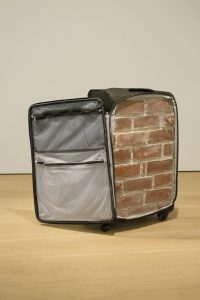
Taking a more conceptual approach, Walead Beshty creates glass sculptures that act as literal records of the process of traveling. Beshty was born in London but is currently based in Los Angeles, and he has plenty of experience with moving across the globe. In his FedEx series,
he builds glass boxes exactly the size of FedEx shipping containers and then packages and mails them to various locations around the world. The work of art consists of the shipment that arrives, cracked or unbroken, as well as the box it was shipped in, complete with any stickers, labels, or packing tape added in transit. The object is a record of the distance it traveled, with the journey physically marked through each crack and label. In the context of this exhibition Beshty’s work takes on new meanings, investigating the ways that traveling affects the traveler. He calls attention to the changes brought about by movement and the mediation of corporations like FedEx in our lives.
WAM’s showing of Baggage Claims is especially timely this spring as issues of movement dominate the news daily. Tariffs and trade deals concern the transfer of goods while changes in immigration policy affect the travel of migrants and refugees. On one hand, Baggage Claims can be seen as individual stories of movement and change, but at the same time it speaks to the political and economic forces that are the root causes of these journeys. Yoan Capote’s Nostalgia, for example, is built of objects from his personal experiences, but the work clearly alludes to the strained political relationship between the United States and Cuba. Baggage Claims provides the opportunity for viewers of all ages to think about global movement and travel while reflecting on journeys they have taken in their own lives, be it visiting a new city, immigrating to a different country, or leaving home for college. As a physical object and as a psychological concept, baggage is something that we all carry with us as we move through life. The pieces in Baggage Claims serve as reminders that travel changes us, whether we are moving across the world or simply going on vacation.
